From the December 2021 issue of Apollo. Preview and subscribe here.
What do we mean by ‘late’ Constable? It is more straightforward to speak of late Turner, an artist who developed fast and lived to a conventional old age. With Constable the situation is not so clear. Firstly, due to family circumstances he was approaching his mid twenties by the time he began his formal training at the Royal Academy Schools, when many artists – including Turner – were admitted in their mid teens. Lateness continued to dog him; his status as a landscape painter held him back professionally, and he was elected a Royal Academician only at the age of 52. Secondly, while he had been late in most areas of life – training, professional recognition, even marriage – death in 1837 came too early. He was just 60, with a painting on the go and teaching duties to discharge at the Academy. The Royal Academy’s exhibition, then, is a portrait of an artist in his fifties, give or take a few months either side – which for many would be a middle period. This exhibition, however, identifies 1825 as a hinge in Constable’s career. In the space of just three rooms, it argues persuasively that this year marked the beginning of significant changes, both in his approach to constructing compositions and in his working methods, that would transform his output for the remainder of his life.
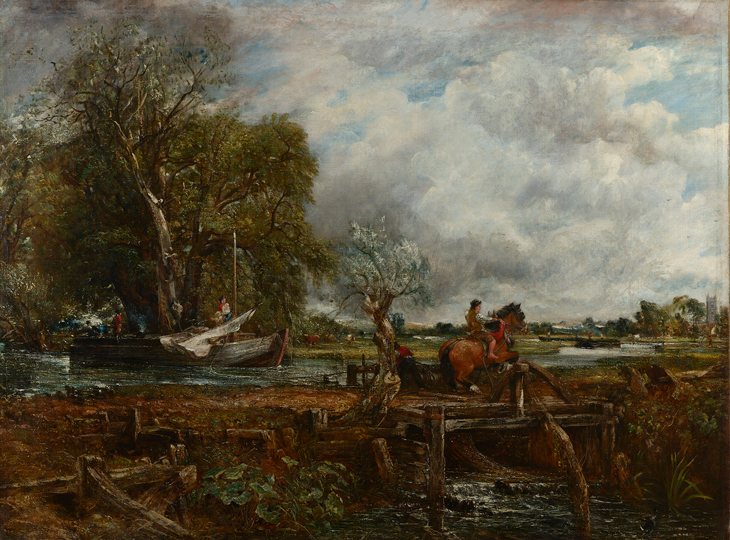
The Leaping Horse (1825), John Constable. Royal Academy of Arts, London. Photo: Prudence Cuming Associates Limited; © Royal Academy of Arts, London
The first spectacular vista of ‘Late Constable’ presents The Leaping Horse (1825) side by side with the full-scale oil sketch that Constable created as part of his unique compositional process. In a way this marks an end, rather than a beginning, as it is the last of the great series of so-called ‘six-footers’: large-scale paintings of Suffolk canal scenes that Constable had been making throughout his forties and with which he made his name. And yet with The Leaping Horse something began to crumble. ‘I must say that no one picture ever departed from my Easil with more anxiety on my part,’ he confessed to his friend John Fisher, and, having been shown in the Royal Academy’s summer exhibition, the painting failed to sell. When it came back to Constable’s studio he tinkered with it: having already added the tower of Dedham Church, he now moved the position of a pollarded willow tree. What was he doing? Worrying, evidently, unable to leave well alone – a trait, as the curators point out, that would become marked as time went on. But more significant was the topographical juggling. In his career up to this date Constable had made fidelity to nature a guiding principle; now he was play – ing fast and loose with his beloved Suffolk scenes as he pursued a new vision.
Constable continued to make Suffolk central to his art. What changes is the emotional temperature. Here is A Boat Passing a Lock (1826), in which sunlight and rain both sweep down onto the landscape – work goes on, the picture seems to say, in a world suffused with spiritual glory and suffering, with light and darkness. It is both ordinary and astonishing, a joyful paean to what it is to be alive in the world; you could hardly find a better illustration of what Constable meant by ‘the moral feeling of landscape’. Here too is another new departure into which strong emotion can be read – the huge Hadleigh Castle (1828–29), an unusual foray for him into a conventional gothic-picturesque subject on which he worked in the aftermath of his wife Maria’s death from tuberculosis. The full-size oil sketch – also on display – has a disturbingly bleak appearance with its scratchy sky and jumbly ground; but whether its vigorous, staccato handling reflects the artist’s ‘emotional turbulence’, as is stated in the catalogue, is debatable. Are the strokes of the palette knife ‘ferocious’ – or, rather, energetic and cursory, a private shorthand he had developed?
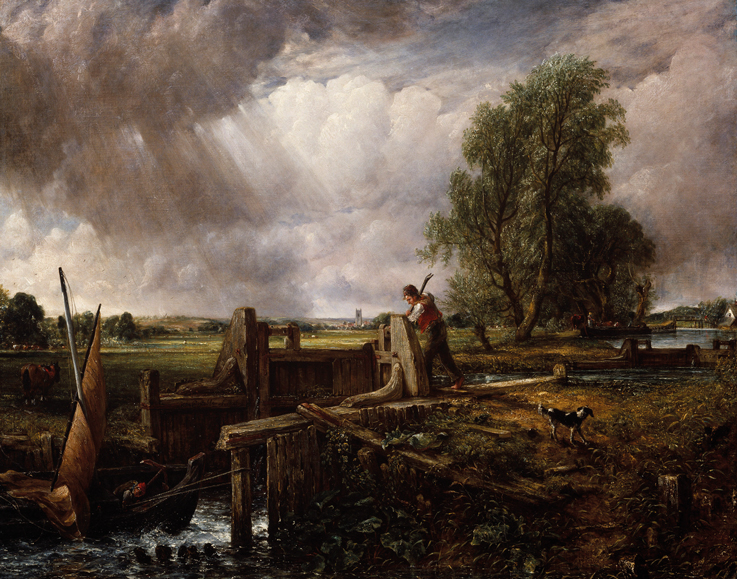
A Boat Passing a Lock (1826), John Constable. Royal Academy of Arts, London. Photo: Prudence Cuming Associates Limited; © Royal Academy of Arts, London
As with his lively oil sketches, which were never intended to leave his studio in his lifetime, when working with a brush or pencil in the privacy of sketchbook pages Constable could draw without bothering about what the critics would think. In a room devoted to works on paper two lusciously inky drawings of the Stour, only just this side of abstract, show him playing with the medium, forgoing detail in favour of exploring the balance of light and shade. But the works that stop us in our tracks are watercolours of two ancient sites, Stonehenge and Old Sarum, both on loan from the Victoria and Albert Museum. Constable had shown little interest in the medium earlier in his career, yet the ill health he experienced in the 1830s, which often made the physical effort of working on a large canvas too demanding, nudged him into it. Stonehenge was based on a neat pencil drawing made on the spot in 1820, yet when he returned to the subject in the mid 1830s he produced a watercolour that crackles with tension, from the stormy drama of the sky to the hare that shoots across the foreground.
In the last room, focusing on the 1830s, the curators demonstrate how extensively Constable continued to experiment in these years. As a modern, urban subject The Opening of Waterloo Bridge 0f 1832 (represented here by a half-size oil sketch) shows him pitching into what was, for him, new compositional territory. But the dominant theme of the room is reflectiveness; Constable was doing some emotional stocktaking in what turned out to be his last years. This was a time of grief, not only for his wife but for others too; ‘thus am I almost dayly being bereft of some friend or other,’ he wrote sadly in 1833. He painted scenes near his birthplace in East Bergholt with such freedom that the paint, dashed on to canvas with brush and palette knife, threatens to obscure the subject. It was as though he had internalised his beloved Suffolk landscape, and it was now re-emerging in kaleidoscopic dream-images.
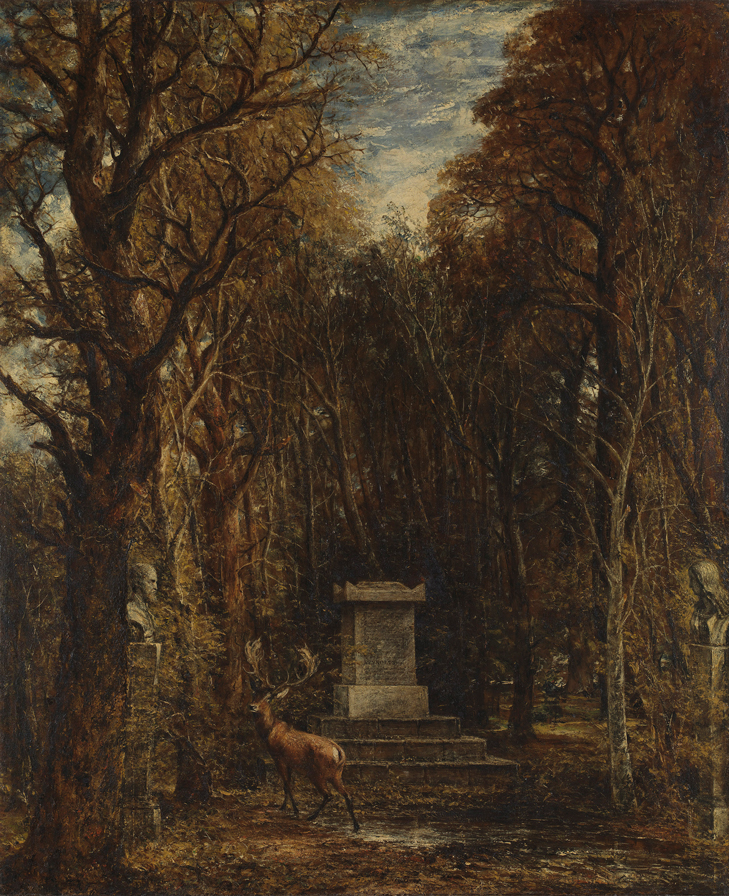
Cenotaph to the Memory of Sir Joshua Reynolds (1833–36), John Constable. National Gallery, London
‘Late Constable’ concludes magnificently with Cenotaph to the Memory of Sir Joshua Reynolds, his contribution, along with Stonehenge, to the Royal Academy’s summer exhibition of 1836. It is a profoundly autumnal work that nods to late Titian and brims with restrained emotion: mourning for his old friend and mentor Sir George Beaumont, who had built the memorial in the grounds of his house, and respect for Reynolds, the first President of the Royal Academy (an institution to which Constable displayed admirable magnanimity). Although Constable’s death the following year was unexpected, visitors to the exhibition are tacitly invited to interpret the Cenotaph as his own valediction – and it is hard to refuse.
‘Late Constable’ is at the Royal Academy of Arts, London, New York, until 13 February 2022.
From the December 2021 issue of Apollo. Preview and subscribe here.


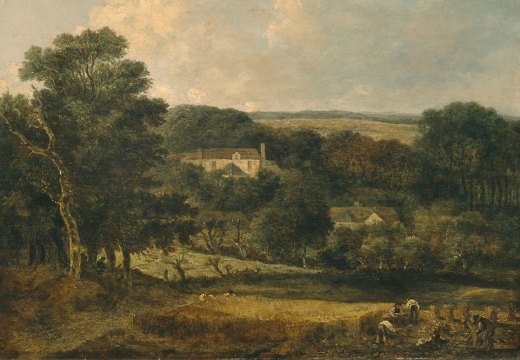
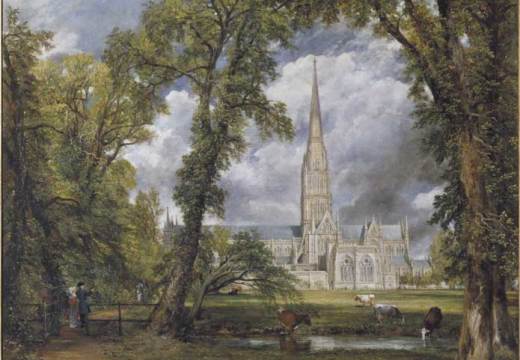
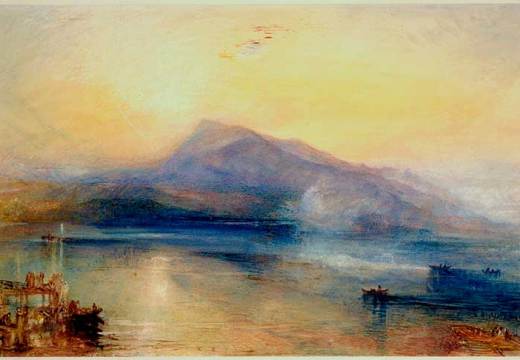









![Masterpiece [Re]discovery 2022. Photo: Ben Fisher Photography, courtesy of Masterpiece London](http://www.apollo-magazine.com/wp-content/uploads/2022/07/MPL2022_4263.jpg)
Suzanne Valadon’s shifting gaze